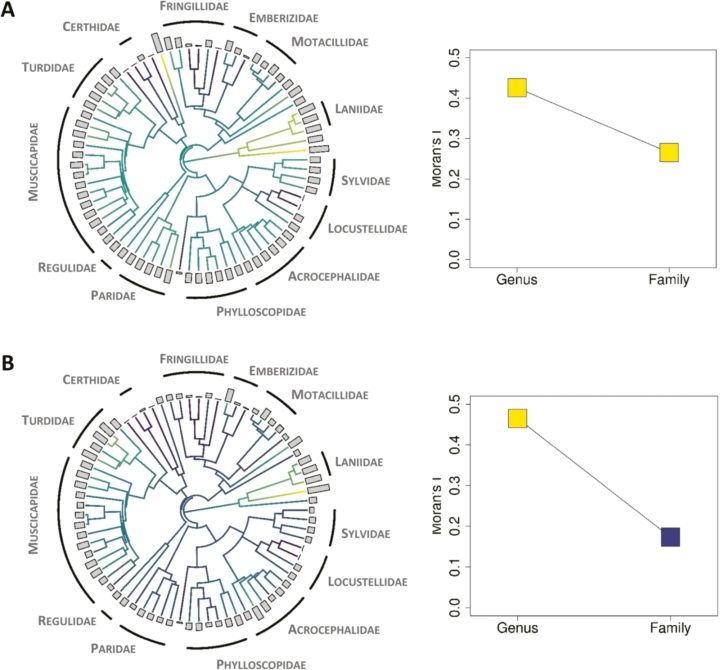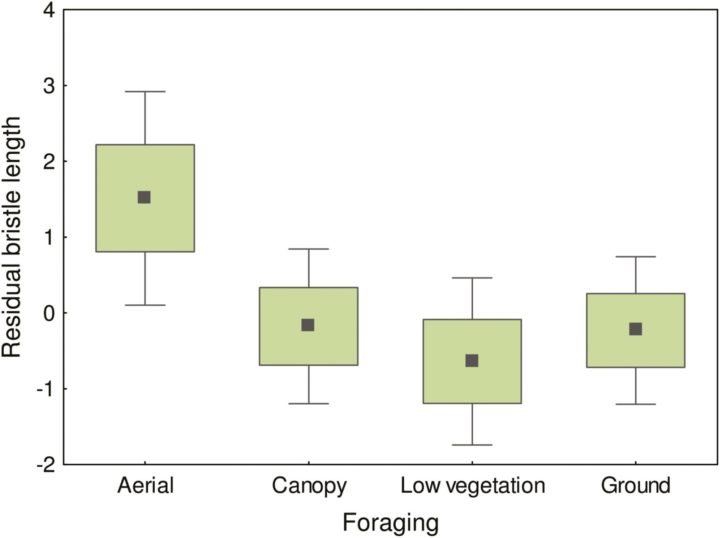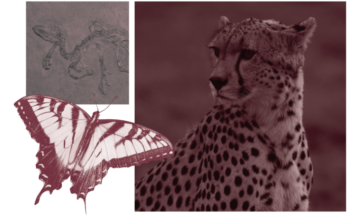Why Do Birds Have Whiskers?
The answer lies in phylogenetics. Written by guest blogger Michael Sellgren.
Published on 1st August 2025
Did you know that birds have whiskers? Though not as pronounced as those found on our pets back home, many have hair-like feathers, known as facial rictal bristles, near their beaks. But what is their purpose? Current theories point towards a role in prey capture, mechanosensory activity (how an organism responds to physical stimuli) and eye protection. Yet these theories lack conclusive scientific evidence as few studies have examined their evolution, let alone through a phylogenetics perspective. That is, until Dr Piotr Minias et al. set out to change this.
In their recent study, a phylogenetic approach was used to investigate the functional evolution of these so-called whiskers in Old-World passerines—those native to Africa, Asia and Europe—from sites in Poland and Mongolia. By using phylogenetics, they were able to account for the effects of shared ancestry to explain the ecological drivers behind the morphology of the birds’ whiskers. The full paper was published in the September 2024 issue of the Zoological Journal of the Linnean Society.
Don’t give this a pass(erine)
“Passerine” is the commonly used term for the order Passeriformes, the largest order of birds on the planet showing very high phylogenetic diversity (a species’ evolutionary uniqueness). As such, they serve as the ideal taxa to study trait functional evolution; the changes in an organism’s observable characteristics which affect its ability to interact with its environment. In this case the traits being studied are passerine whiskers. As you can see from the four birds in Figure 1, passerines show incredible diversity; note the differences in wing structure, plumage, and beak morphology, all which influence how they interact with their environment.

INSERT Figure 1. A collection of birds within the Passeriformes order. Moving clockwise from left to right, Purple starling (Lamprotornis purpureus), Javan White-Eye (Zosterops flavus), Common nightingale (Luscinia megarhynchos), European Nuthatch (Sitta europaea).
Minias et al., wanted to test for potential evolutionary links between the length and number of facial bristles (henceforth known as whisker traits) and passerine ecology, life history, biogeography and morphology. Prior to this, research has failed to focus on passerines as an independent group, instead taking a more generalist approach by studying multiple bird orders simultaneously. Yet scale is extremely important when answering questions in evolution, as evolutionary processes can operate differently across different scales (e.g. across time and space). Through their research, Minias et al. show that there are clear differences when investigating the same evolutionary questions at a genus or family level.
Ring ring, it’s data collection on the line
Despite challenges, Minias et al. didn’t let a global pandemic sabotage their study. Between the 2020 and 2023 spring and autumn migration seasons, they ringed more than 1,300 birds from 73 species across several sites in Poland and Mongolia. No, you didn’t read the wrong tense of ‘ring’ in the previous sentence. Bird ringing is a technique used to safely attach a numbered metal or plastic ring to the leg of a bird to measure variables of interest, in this case the age, sex, and whisker traits of each bird. If you’ve ever visited London’s Royal Parks, you will have probably spotted these rings on the resident geese.
Next, the diet and main foraging location of each bird was determined by gathering information from various bird trait databases, such as AVONET and EltonTraits. Then, for the most exciting part of the project, ecology’s best friend RStudio was employed for data analysis, accounting for shared ancestry between the species identified.
Two main questions were asked: “are there any similarities between whisker traits in related taxa at the genus and family level?”, and “what are the evolutionary predictors of these whisker traits?”.
A little birdie told me (what?)
For their first research question, a significant phylogenetic autocorrelation in the number of bristles of different passerines at both the genus and family level were found. What is phylogenetic autocorrelation you ask? Essentially, it is the tendency of traits in closely related taxa to be more similar than expected by chance due to shared ancestry. For example, some fruit bat species use echolocation despite having enhanced eyesight, suggesting that echolocation is a remnant trait which appeared in a common ancestor with other bat species.
However, when investigating the length of facial bristles, Minias et al., found that there was only a significant phylogenetic autocorrelation between different genera, but not between families (Figure 2). These differences at the family level suggest that whiskers evolved relatively recently, and that this occurred independently among different families. This is likely a result of the different selection pressures different families faced, be it ecological, biogeographical, or morphological pressures changing over space and time.

Figure 2. Phylogenetic distribution and autocorrelation (the tendency of traits in closely related taxa to be more similar than expected by chance due to shared ancestry) of rictal bristle number (A) and length (B). The bars shown in the left panel represent raw trait data and labels are provided for major families of Old-World passerines. On the right-hand panel, the phylogenetic autocorrelograms illustrate the phylogenetic autocorrelation at both the genus and family levels, with significant phylogenetic autocorrelation coloured in yellow, and non-significant phylogenetic autocorrelation coloured in blue.
An insect a day keeps the bristles away (from my eyes)
For their second research question, Piotr and his colleagues found very strong evidence that omnivorous or invertivorous passerines had more numerous and longer facial bristles when compared to granivorous species that only ate seeds (Figure 3). Also, passerines foraging directly in the air (i.e. catching insects in flight) had longer whiskers (Figure 4). These findings support the earlier hypotheses that whiskers assist insect capture and eye protection, whilst also showing that foraging strategy is a good predictor of how long and how many whiskers a passerine may have.
The theory goes that whiskers may also help birds in navigation. Consistently, Minias et al. found that living in dense habitats (e.g. shrublands) promoted the evolution of longer bristles. This is likely due to their role in sensory navigation, which may be important when visual cues are limited (e.g. in dense vegetation). What this ultimately suggests is that whiskers seemingly have multiple functions, depending on the species; assisting with prey capture, eye protection, and navigation using sensory cues.
![Boxplots showing how the bristle number and length varies between different trophic niches (position in the food chain) in Old-World passerines.]](https://ca1-tls.edcdn.com/content/_720xAUTO_crop_center-center_none/Figure3.jpeg)
Figure 3. Illustration of the differences in rictal bristle number (A) and length (B) between different trophic niches (position in the food chain) in Old-World passerines.

Figure 4. The differences in rictal bristle length between different dominant foraging locations in Old-World passerines.
Whisking away their food
Based on the above evidence, Minias et al., propose that Old-World passerines have whiskers to help serve multiple non-exclusive functions regarding prey capture. In short? They help birds detect and capture prey; the cuteness is simply an added bonus!

About the Paper
This blog was inspired by a paper published in our Zoological Journal, an international journal publishing high-quality papers covering systematic & evolutionary research from species both alive and extinct. Want to contribute to a blog? Contact the Journal Officer at georgia@linnean.org.

Guest Blogger
Written by Michael Sellgren (pictured), a Biological Sciences graduate from Imperial College London. A big fan of all things nature as a result of his childhood in Borneo, he chose to focus his studies on the field of ecology. Calling London home, he’s keen on building a career in the broader environmental sector. Edited by Georgia Cowie, Journal Officer at the Linnean Society.
